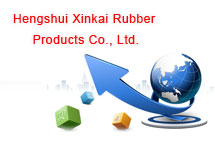

1: Material analysis of the impermeable membrane of the reservoir
The raw material used for the impermeable membrane of the reservoir is a new pe thermoplastic resin, a waterproof barrier film made by blow molding. It is a high molecular polymer, has the characteristics of odorless, odorless, and has good heat resistance and cold resistance. It has high rigidity and toughness, good mechanical strength, high resistance to environmental stress cracking and tear resistance.
Two: The planting cooperative adopts the specifications of the impermeable membrane of the reservoir
1. Film thickness is divided into: 0.5mm, 0.8mm, 1.0mm
2, the width is divided into: 6m, 8m
3. The length of the membrane: 50-100m, the specific quantity can be requested.
Three: The quality basis and urban construction type of the impermeable membrane of the reservoir
1, Thickness deviation -3%
2, Tensile breaking strength 27N
3, Elongation at break 700%
4, right angle tear strength 125N
5, puncture resistance 320N
6, carbon black content 2%
The construction process of laying anti-seepage membrane in the reservoir is as follows: site excavation and leveling - foundation pit rolling - slope leveling treatment - laying anti-seepage membrane - fixing anti-seepage membrane - backfilling and water injection.
Four: Base surface requirements for excavating reservoirs
At the selected location, it can be divided into circle and rectangle according to the shape, and the construction of the pond is started according to the actual situation on the site. After cleaning, the slope surface should be flat, dense and smooth, and meet the required flatness for laying the impermeable membrane.
Five: Weather requirements when laying the impermeable membrane of the reservoir:

1. The temperature should generally be above ten degrees Celsius.
2. The wind power should be below grade 4.
3. When the temperature is too low, it is generally not recommended to construct and lay in strong wind, rain and snow weather above grade 4.
4. In windy weather, when the wind affects the laying of the anti-seepage film, the anti-seepage film to be welded should be firmly pressed with sandbags.
Six: how to lay the impermeable membrane of the reservoir
1. Before laying the bottom of the pool, check and measure the laying area first, and transport the anti-seepage membrane with the matching size to the corresponding position according to the measured data. Flat and straight, avoiding wrinkles and ripples. The borders should be aligned neatly, the two sheets that need to be welded should be aligned, and the overlap width should be controlled at about 15 cm.
2. Before laying the slope in the pond, check and measure the laying slope, and transport the anti-seepage membrane to the anchoring trench platform according to the length and width of the material. The way. It should extend from the high position to the bottom, and at the same time, it should not be pulled too tightly, and a 5% margin should be reserved for local sinking and stretching. During the rolling process, it is pulled open and stretched flat, and it is in line with the slope surface and has no protruding folds. It should be cut reasonably in the fan-shaped area, so that the upper and lower ends are firm.
Seven: The method of bonding the impermeable membrane of the reservoir. Before the membrane is bonded, use a towel to remove the sand, soil and other dirt on the membrane surface, and the membrane surface should be clean.
1. Hot melt welding method:
Before hot-melt welding, the upper and lower layers of impermeable membranes must be overlapped by 15 cm. The welding process is divided into: adjusting pressure, setting temperature, setting speed, welding seam lap inspection, film loading machine, and starting the motor. The welds are required to be neat and beautiful, and there should be no slip welding or skipping. The temperature, speed and pressure of welding are determined by experiment and testing. The edge of the upper impermeable membrane at the welding seam should be ground into an inclination angle to improve the welding quality of the welding seam. The edge of the folded part, cut the creases of the cracks to overlap them flat. When extruding welded cracks or wrinkle cut parts, the overlap should not be less than 10 cm. Cross-lap joints should be avoided, and T-shaped staggered welding should be used. The welds are required to be neat and beautiful, and there shall be no slip welding or skipping.
2, adhesive bonding method
When the anti-seepage joint is constructed in a large area, it is not recommended to use the glue bonding method. If it is only connected at the corners or with the building cement wall, the adhesive bonding method can be used. The joint strength of this method is too low, which is only about 40% of the strength of the base material of the impermeable membrane, and the adhesive will melt at 5 °C. Reduce adhesion. As a result, the seams cannot stick, and the anti-seepage requirements cannot be met. Although it is convenient to use hot melt adhesive for bonding, it is afraid that there will be gaps at the interface when immersed in water for many years, and the gap will become larger and larger, and the anti-seepage effect will be lost.